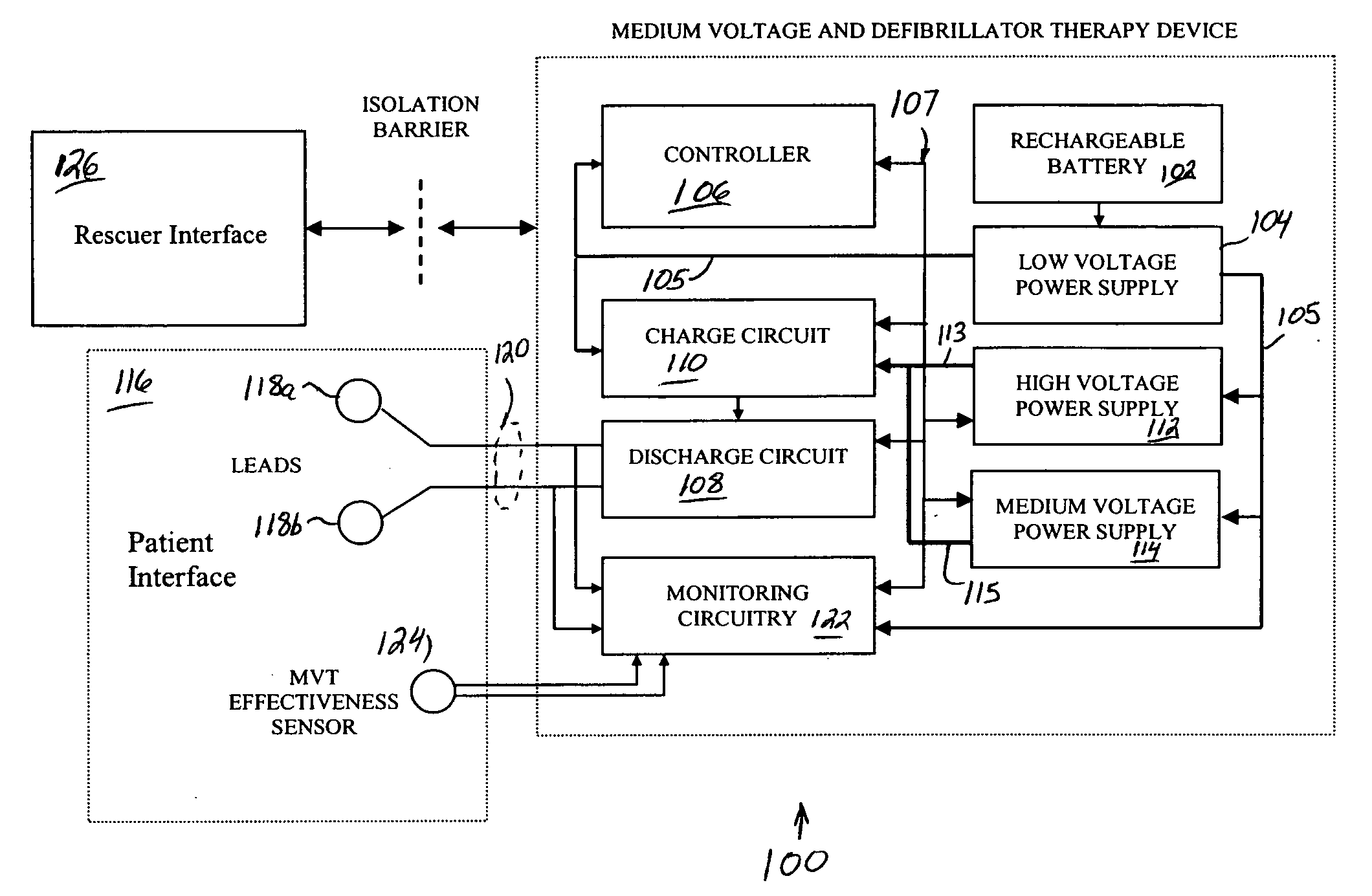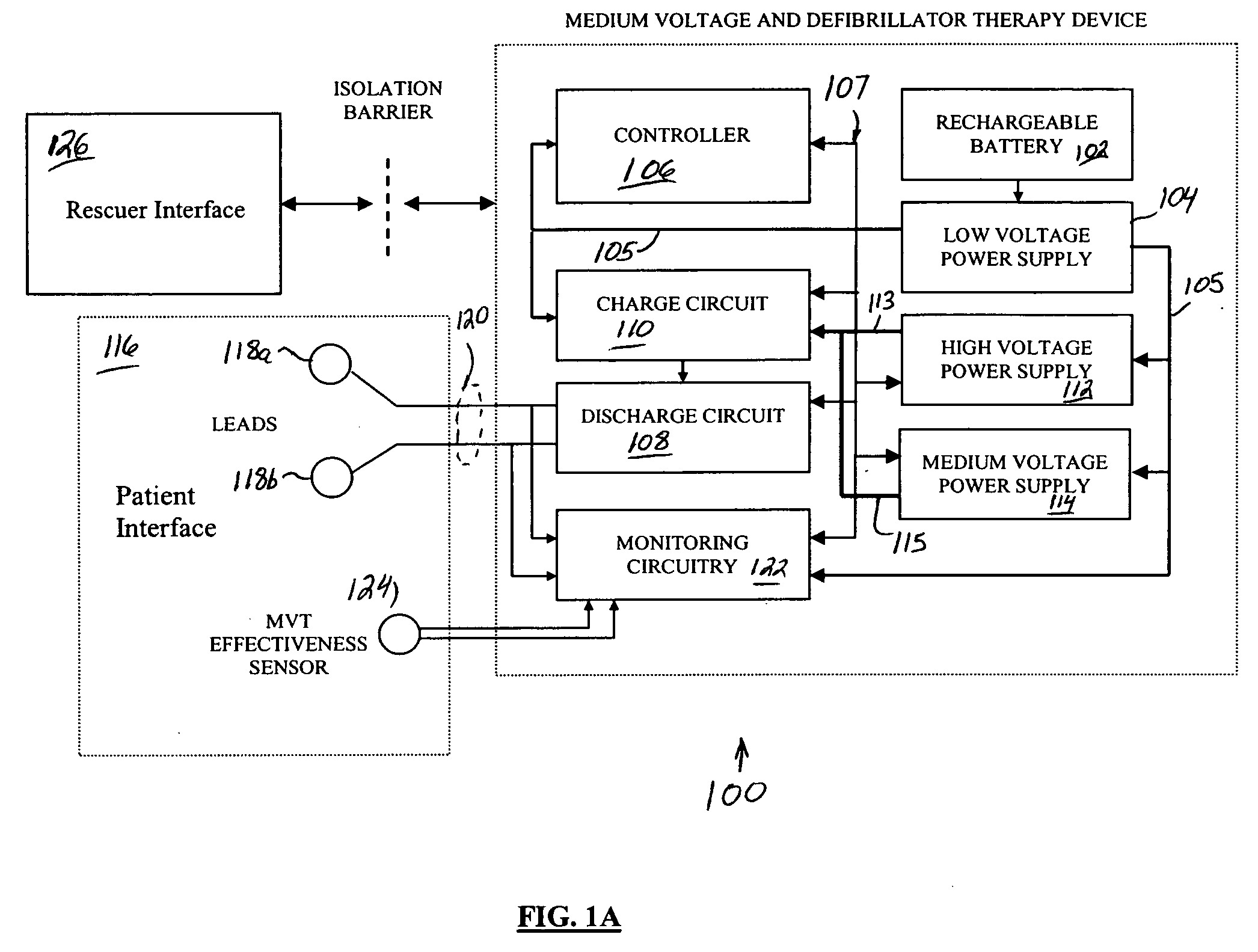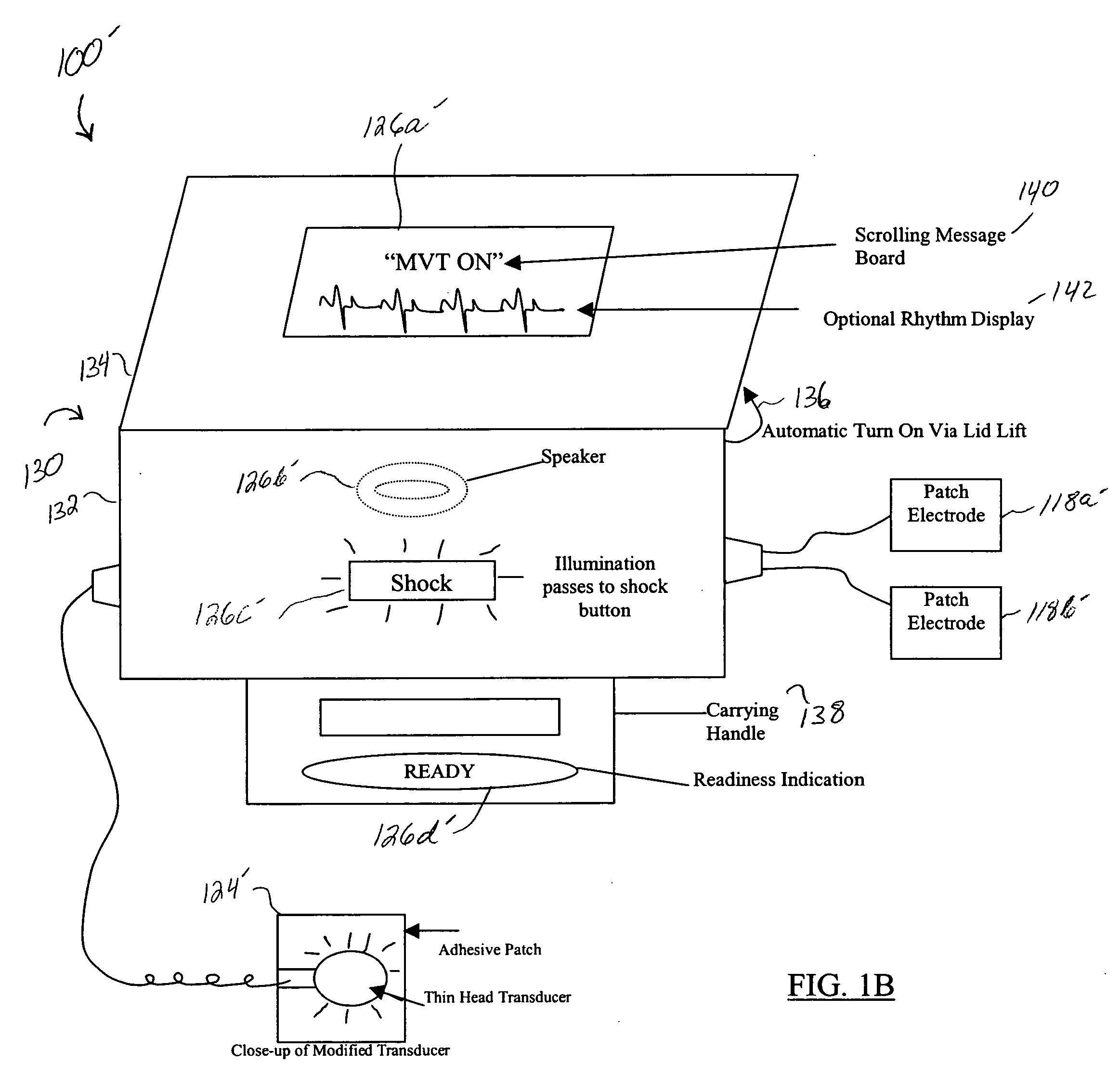Medium voltage therapy applications in treating cardiac arrest
a technology of cardiac arrest and application, which is applied in the field of treatment of individuals experiencing cardiac arrest, can solve the problems of cardiac arrest, hampered implementation of cpr in the field, and difficulty in inducing non-professional rescuers to perform cpr using an aed
- Summary
- Abstract
- Description
- Claims
- Application Information
AI Technical Summary
Benefits of technology
Problems solved by technology
Method used
Image
Examples
example aed 100
Example AED 100 preferably can also administer biphasic defibrillation pulses of up to 200 J at a selected voltage in the range of 1000-2000 V.
[0048] In one example resuscitation utilizing AED 100, an MVT signal is administered to a patient experiencing ventricular fibrillation. The MVT signal has periodic packets of pulses 200, each pulse packet 202 having a 100 ms duration 204 and an amplitude 214 of approximately 250 volts. In response to the MVT signal, a large fraction of the patient's cardiac cells in ventricular fibrillation pass through a diastolic phase (phase 4) and are captured during any given 100 ms period. The phase 4 cells contract while those “captured” phase 3 cells prolong their contraction generating some cardiac output and thus producing coronary perfusion. Even though the phase 3 cells are already contracted at the time of the pulse, the pulse extends their contraction so that they do not relax and reduce the cardiac output being generated by the newly contracti...
PUM
 Login to View More
Login to View More Abstract
Description
Claims
Application Information
 Login to View More
Login to View More - R&D
- Intellectual Property
- Life Sciences
- Materials
- Tech Scout
- Unparalleled Data Quality
- Higher Quality Content
- 60% Fewer Hallucinations
Browse by: Latest US Patents, China's latest patents, Technical Efficacy Thesaurus, Application Domain, Technology Topic, Popular Technical Reports.
© 2025 PatSnap. All rights reserved.Legal|Privacy policy|Modern Slavery Act Transparency Statement|Sitemap|About US| Contact US: help@patsnap.com



